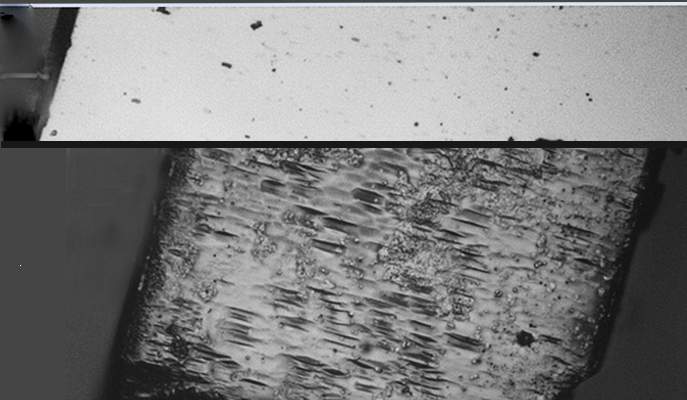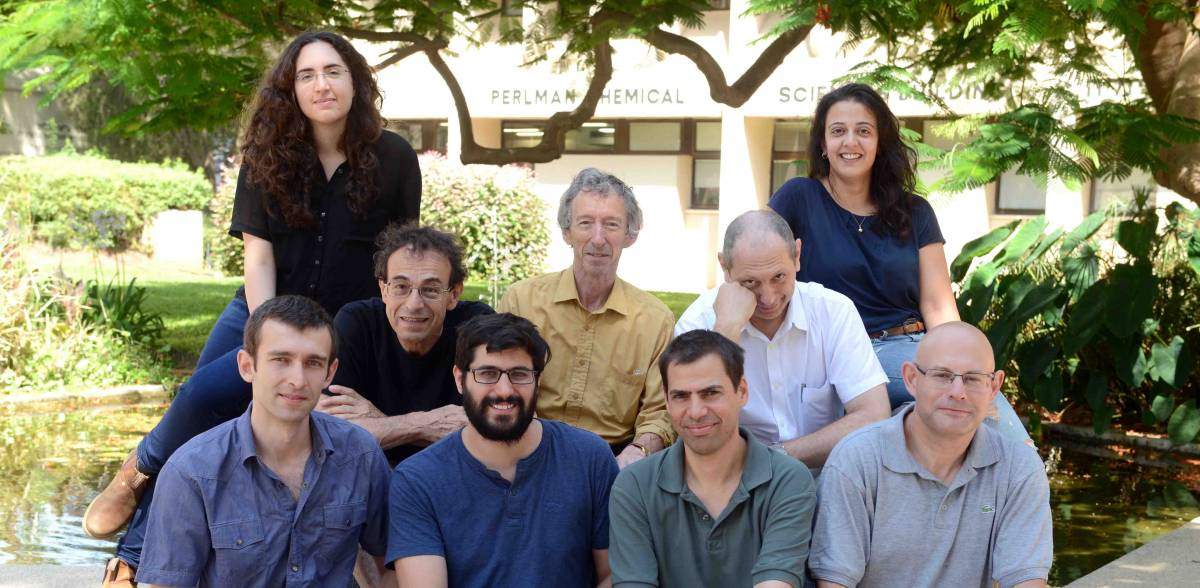Understanding the properties of these new materials will help advance new photoelectric technologies

What makes materials that could be the “next big thing” in solar technology so unique? Researchers at the Weizmann Institute of Science have made a major advance towards solving the mystery of halide perovskites, soft materials that are unusually efficient at converting solar energy to electrical power.
Perovskites are a wide-ranging family of materials that often serve in switches, solid-state memory devices and other electronic components, and owe their unique properties to a characteristic crystalline structure. A mineral with this structure was first identified in 1839 in the Ural Mountains and named after the Russian mineralogist Count Lev Perovski. Until recently, the most commonly studied and used materials in this family were the hard and stable oxide perovskites.
But in 2009, Japanese scientists discovered that perovskites harboring a halide (chloride, bromide or iodide) in their crystal lattice could absorb sunlight and turn it into electricity. Subsequent research made such rapid progress that already in 2013, Science magazine picked halide perovskites as a runner-up for Breakthrough of the Year. Dozens of companies around the world are now racing toward creating commercial solar cells from these materials. In the meantime, scientists, including those at the Weizmann Institute, are seeking to discover what makes these materials so special.
Meteoric rise in efficiency
The conversion efficiency of experimental halide perovskite solar cells soared from below 4% initially, already high for a new solar cell material, to 22% by 2016 – more than five-fold. “We’ve been involved in solar cell research for four decades, but have never seen anything even remotely resembling such a meteoric rise,” says Prof. David Cahenof the Materials and Interfaces Department, who led the Weizmann team together with departmental colleagues Prof. Gary Hodes and Prof. Igor Lubomirsky, and Prof. Dan Oron of the Physics of Complex Systems Department. “It’d taken scientists 20 to 30 years to make the same progress with silicon or other solar cell types.”
Rather than replacing the materials commonly used in today’s solar cells, halide perovskites might work best in combination with them. Silicon converts about 17% of sunlight into
electricty in commercial solar cells and up to 26.5% in the lab; it is most efficient at converting energy in the red and infrared portions of the spectrum, performing poorly in the visible portion, especially the green-blue part. Since halide perovskites burst on the scene, they have been the leading candidates for boosting the conversion of solar energy to electricity: as an add-on to silicon, they may finally enable an efficient use by solar cells of all the visible parts of sunlight.

Unlike silicon cells, which require high-temperature manufacturing, halide perovskite cells can be cheaply and easily produced at room temperature by mixing together solutions of several salts and drying them out. “All in all, perovskites are an optoelectronic material dream come true,” Cahen says.
The exceptional performance of halide perovskites, however, puzzled scientists. Due to their relatively weak atomic bonds, the subclass used in solar cells are as soft as wood and bone, and somewhat disordered on the atomic scale; yet in terms of their electrical properties and solar conversion, they perform like high-quality hard and well-ordered semiconductor materials.
Because they are such unconventional materials, it took an unconventional approach to explain their properties
Theoreticians had hypothesized that, like their cousins the oxide perovskites, halide perovskites are ferroelectric – a property that allows a material to become spontaneously polarized under applied electric voltage. Ferroelectric materials are typically composed of microscopic brick-like units, measuring from a few nanometers to a few micrometers, each having a positive and a negative side. Put together, such units, called polar domains, form a structure that could delay the return of sunlight-excited electrons to their initial energy state, which, in turn, would reduce the conversion of solar energy to heat instead of to an electric current. Ferroelectricity could therefore explain the relatively low thermal loss, and thus the high efficiency, of solar cells made with these materials.
Numerous research teams had tried to find out if halide perovskites were indeed ferroelectric, but results were inconsistent. The accepted method for proving the existence of ferroelectricity was to expose the material to a strong electric field, which should spontaneously align its polar domains – if they exist – along the direction of the electric field. Such experiments can be easily performed with the resilient oxide perovskites, but they cause the soft halide perovskites to decompose.
Cold and stable
As reported recently in the Proceedings of the National Academy of Sciences, USA, Weizmann Institute researchers found an original way around this problem. They built a system for conducting experiments at the low temperature of –70 degrees Celsius, which keeps the halide perovskite stable under the high electric fields. Furthermore, they measured the material’s electrical conductance, rather than its storage of electric charges, as is commonly done in such experiments.
By analyzing the pattern of conductance, the researchers managed to prove, for the first time, that despite their softness, the halide perovskites used in solar cells are definitely ferroelectric. The researchers supplied additional proof of this property by chemically etching the surface of crystals with acetone. This technique revealed the central structural feature of ferroelectric materials: the existence of polar domains aligned with the crystal’s polarity.
This approach has opened a new window on understanding the properties of soft semiconductors
“It’s a most unusual combination – halide perovskites are soft, but they behave like classic, hard semiconductors,” says Ph.D. student Yevgeny Rakita, the first author on the research paper, together with staff scientist Dr. David Ehre. “Because they are such unconventional materials, it took an unconventional approach to explain their properties.”
This approach has opened a new window on understanding the properties of soft semiconductors and may help further clarify the exact role of ferroelectricity in these materials. In the meantime, the study’s findings may advance the development of perovskite-based solar cells.
The research team also included research students Elena Meirzadeh, Hadar Kaslasi, Yagel Peleg and Omri Bar-Elli.
Prof. David Cahen’s research is supported by the Mary and Tom Beck Canadian Center for Alternative Energy Research, which he heads; the Ben B. and Joyce E. Eisenberg Foundation Endowment Fund; the Leona M. and Harry B. Helmsley Charitable Trust; Dana and Yossie Hollander, Israel; the Wolfson Family Charitable Trust; the Harold L. Perlman Family Foundation; and the estate of Stanley I Batkin, Scarsdale, NY; Prof. Cahen is the director of the Sustainability and Energy Research Initiative; and the incumbent of the Rowland and Sylvia Schaefer Professorial Chair in Energy Research.

Recent Comments